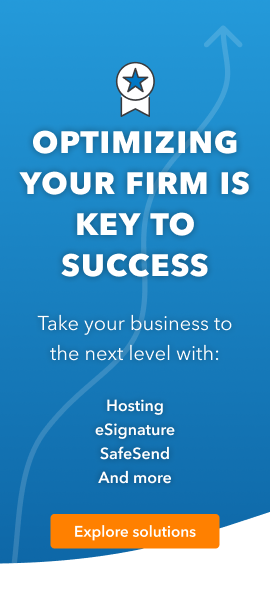- Topics
- Training
- Community
- Product Help
- Industry Discussions
- User Groups
- Discover
- Resources
- Intuit Accountants Community
- :
- Lacerte Tax
- :
- Lacerte Tax Discussions
- :
- From my understanding it was setup as an automatic transf...
Excess Roth Contributions since 2016, do we only need to file the Form 5329 for past years or amend the entire tax return? Also, are earnings taxable if client is 59 1/2?
- Mark Topic as New
- Mark Topic as Read
- Float this Topic for Current User
- Bookmark
- Subscribe
- Printer Friendly Page
- Mark as New
- Bookmark
- Subscribe
- Permalink
- Report Inappropriate Content
I recently took on a client who just discovered that Roth Contributions have been happening by his investment advisor for the past four years, after he retired in 2015. Based on what I have read we need to file form 5329 for each year, however since no other changes are taking place for those 3 years, do we need to amend his return or just submit the form?
Also, he needs to withdraw the entire amount of excess contributions by the end of this year, correct?
Does he need to withdraw the earnings? and if so are they taxable since he is over 59 1/2?
Best Answer Click here
![]() This discussion has been locked.
No new contributions can be made. You may start a new discussion
here
This discussion has been locked.
No new contributions can be made. You may start a new discussion
here
Accepted Solutions
- Mark as New
- Bookmark
- Subscribe
- Permalink
- Report Inappropriate Content
Form 5329 can be filed by itself.
The excess contributions plus earnings attributable to the excess contributions need to be withdrawn ASAP. The earnings are taxable. Age doesn't matter.
The more I know the more I don’t know.
- Mark as New
- Bookmark
- Subscribe
- Permalink
- Report Inappropriate Content
Form 5329 can be filed by itself.
The excess contributions plus earnings attributable to the excess contributions need to be withdrawn ASAP. The earnings are taxable. Age doesn't matter.
The more I know the more I don’t know.
- Mark as New
- Bookmark
- Subscribe
- Permalink
- Report Inappropriate Content
- Mark as New
- Bookmark
- Subscribe
- Permalink
- Report Inappropriate Content
The more I know the more I don’t know.
- Mark as New
- Bookmark
- Subscribe
- Permalink
- Report Inappropriate Content
2016: $6,500
2017: $6,500
2018: $6,500
2019: $7,000
Then you have a 5329 for 2016 showing $6,500 excess contributions subject to the 6% penalty.
Another 5329 for 2017 showing $13,000 excess contributions ($6,500 current year + $6,500 carryover) subject to 6%.
And a 5329 for 2018 showing $19,500 excess contributions @ 6%.
The custodians have some complex formula to calculate and allocate earnings but I would give them the excess amount from each year and let them calculate and distribute the excess contributions and earnings. This will flow through the 8606 and 5329 for 2019, only the earnings will be taxable on the 8606 and the distribution will clear out the excess contribution carrying over on the 5329.
Rick
- Mark as New
- Bookmark
- Subscribe
- Permalink
- Report Inappropriate Content
- Mark as New
- Bookmark
- Subscribe
- Permalink
- Report Inappropriate Content
Each year can be filed as the 5329 alone (separately for each year.) Signature at the bottom.
Age 59.5 only impacts early withdrawal penalty. Withdrawal is always taxable (at least partially) Does the client qualify for a waiver?
Waiver of tax for reasonable cause.
The IRS can waive part or all of this tax if you can show that any shortfall in the amount of distributions was due to reasonable error and you are taking reasonable steps to remedy the shortfall. If you believe you qualify for this relief, attach a statement of explanation and file Form 5329 as follows.
Complete lines 52 and 53 as instructed.
Enter "RC" and the amount of the shortfall you want waived in parentheses on the dotted line next to line 54. Subtract this amount from the total shortfall you figured without regard to the waiver, and enter the result on line 54.
Complete line 55 as instructed. You must pay any tax due that is reported on line 55.
The IRS will review the information you provide and decide whether to grant your request for a waiver. If your request is not granted, the IRS will notify you regarding any additional tax you may owe on the shortfall.
Answers are easy. Questions are hard!
- Mark as New
- Bookmark
- Subscribe
- Permalink
- Report Inappropriate Content
- Mark as New
- Bookmark
- Subscribe
- Permalink
- Report Inappropriate Content
"...Roth Contributions have been happening by his investment advisor".
Meaning, done without his approval?
- Mark as New
- Bookmark
- Subscribe
- Permalink
- Report Inappropriate Content
- Mark as New
- Bookmark
- Subscribe
- Permalink
- Report Inappropriate Content
- Mark as New
- Bookmark
- Subscribe
- Permalink
- Report Inappropriate Content





